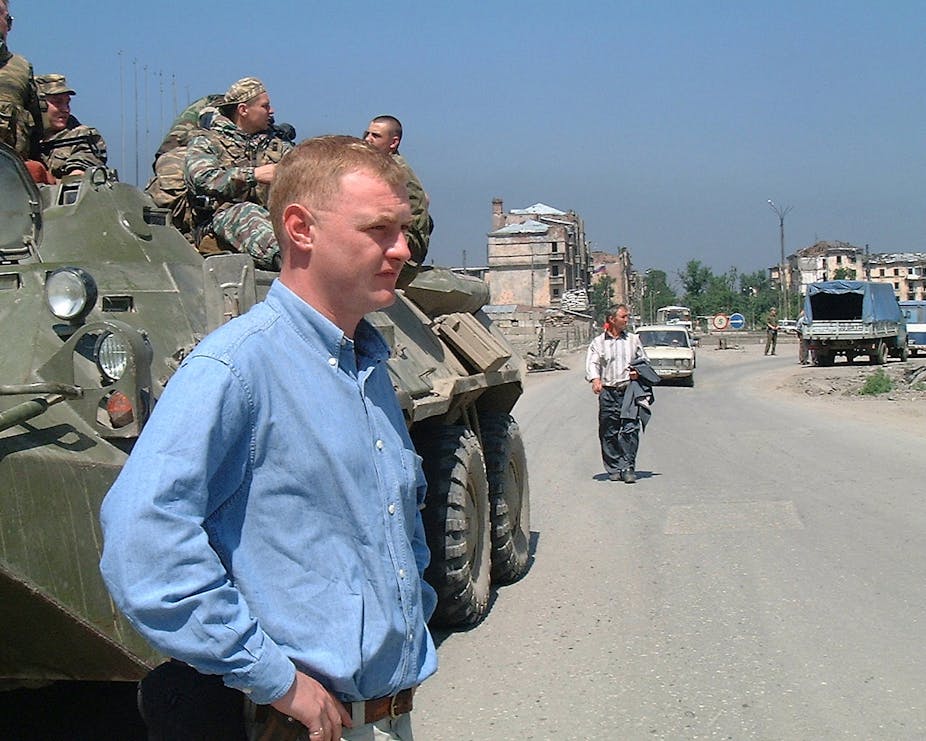It all happened so quickly I barely realised how much danger we had been in. The door had opened. The cameraman and I were immediately rushed into another room. We were told to remain completely still and silent.
We were not supposed to be in Chechnya. Then, in early 2000, the region on Russia’s southern edge was a war zone. Russian troops had launched a major campaign against separatist fighters some months before.
The Moscow authorities – presumably mindful of unfavourable media coverage of an earlier war – had declared the region a “zone of anti-terrorist operation”. It was closed to journalists. If you did manage to get in, as we did on occasion, you were on your own or, at least, in the hands of those you had hired to get you there.
We had stopped at the house of a distant relative of our fixer. He had suddenly taken fright when another relative – a member of a local militia – also arrived for a visit. All I saw was the door being opened by a hand below a camouflaged sleeve. That’s when we were rushed out of the room. Our fixer had feared we might be kidnapped and held for ransom.
Now we sat, waiting for the coast to clear. I wondered if I would spend another ten minutes in the room, or another ten months. I wondered too whether we had placed our trust in the right person. Had he perhaps actually brought us here to hand us over?

The man left soon after. So did we. My fears were misplaced. But it was a lesson I have never forgotten in the impossibility of guaranteeing safety for journalists in areas of armed conflict.
The dangers then were real. A little over a year earlier, a group of telecom engineers from Britain and New Zealand had been taken captive in Chechnya. When no ransom was paid, they were beheaded.
The recent ordeal of Anthony Loyd and Jack Hill of The Times is a terrifying example of the dangers journalists can face. The fact is that in war zones, in order to get where they need to go to tell a story, reporters often need to rely on people they barely know.
Reporters are targets
In most cases, the guides, drivers, and translators want to help because the money is good, they genuinely want the world to know of their people’s plight, or both. Just sometimes, they see in a foreigner from a wealthy country the potential for an even bigger payday.

I have met Anthony Loyd on a couple of occasions, most recently when we were on a discussion panel together in late 2012. I am not alone in considering him the best war correspondent of my generation. He, of all people, understands the potential risk.
So why do it? Loyd himself wrote about this extensively in his book My War Gone By, I Miss It So. Anyone seeking to know what draws journalists to cover armed conflict should read it.
For the past two decades, as journalists seem increasingly to have become targets in war zones, bigger news organisations have sought to mitigate the danger by offering hostile environment training. In addition to learning first aid, and how to take cover when under fire, these courses often include tips on how to behave if you are kidnapped.
Ultimately, you may have to trust someone you barely know with your life. Anthony Loyd and Jack Hill’s escape has shed light on the risks journalists routinely take to get news from dangerous places to our newspapers and screens. We would all be much more in the dark if they did not.

